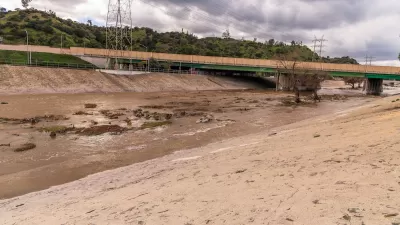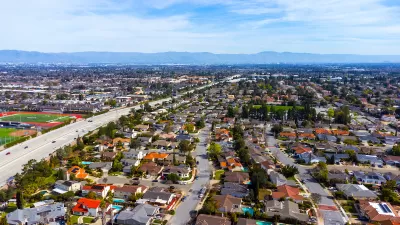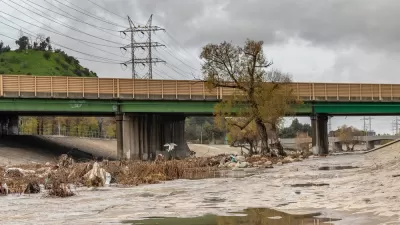The MS4 Permit was designed as a way to clean up urban stormwater runoff in Southern California. Many of the smaller cities in the region, however, are struggling to pay the bill to cover the permits costs.
Local governments and state representatives in Southern California are working "to figure out what they can do to help cities pay for a plan that could reach $20 billion over 20 years for the 88 cities in Los Angeles County," according to an article by Steve Scauzillo.
State senators Ed Hernandez, D-West Covina, and Bob Huff, R-San Dimas, recently joined "city managers, mayors, city attorneys as well as staff members from the Los Angeles Regional Water Quality Control Board" for a meeting to examine potential solutions to the funding problems cities have encountered as a result of the Municipal Separate Storm Sewer System Permit (MS4 Permit). Local governments "have voiced complaints that permits required to rid toxic chemicals and bacteria from storm water imposed staggering costs that could bankrupt smaller cities."
Scauzillo cites the example of Monrovia, which faces a price tag of $231 million for its stormwater permits. That works out to more than $1,300 per parcel in the city. Adds Scauzillo: "The cost for the small, foothill city of Bradbury is more than $60 million. Santa Clarita would pay $499 million. The city of Hawthorne would be forced to pay $193 million over 10 years."
Scauzillo includes some of the potential solutions for the problem discussed during the meeting, and more background on the environmental concerns the permit attempts to address.
FULL STORY: LA County cities have a $20 billion storm water cleanup bill but they want help

Manufactured Crisis: Losing the Nation’s Largest Source of Unsubsidized Affordable Housing
Manufactured housing communities have long been an affordable housing option for millions of people living in the U.S., but that affordability is disappearing rapidly. How did we get here?

Americans May Be Stuck — But Why?
Americans are moving a lot less than they once did, and that is a problem. While Yoni Applebaum, in his highly-publicized article Stuck, gets the reasons badly wrong, it's still important to ask: why are we moving so much less than before?

Using Old Oil and Gas Wells for Green Energy Storage
Penn State researchers have found that repurposing abandoned oil and gas wells for geothermal-assisted compressed-air energy storage can boost efficiency, reduce environmental risks, and support clean energy and job transitions.

Updating LA’s Tree Rules Could Bring More Shade to Underserved Neighborhoods
A new USC study finds that relaxing Los Angeles’ outdated tree planting guidelines could significantly expand urban tree canopy and reduce shade disparities in lower-income neighborhoods, though infrastructure investments are also needed.

California's Canal Solar Projects Aim to Conserve Resources and Expand Clean Energy
California’s Project Nexus has begun generating electricity from solar panels installed over irrigation canals, with researchers and state agencies exploring statewide expansion to conserve water and boost clean energy production.

HHS Staff Cuts Gut Energy Assistance Program
The full staff of a federal program that distributes heating and cooling assistance for low-income families was laid off, jeopardizing the program’s operations.
Urban Design for Planners 1: Software Tools
This six-course series explores essential urban design concepts using open source software and equips planners with the tools they need to participate fully in the urban design process.
Planning for Universal Design
Learn the tools for implementing Universal Design in planning regulations.
Heyer Gruel & Associates PA
City of Moreno Valley
Institute for Housing and Urban Development Studies (IHS)
City of Grandview
Harvard GSD Executive Education
Salt Lake City
NYU Wagner Graduate School of Public Service
City of Cambridge, Maryland





























